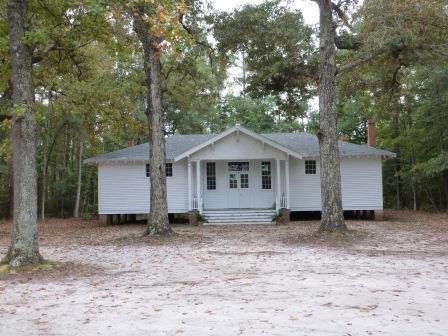Lawmakers should act now to preserve Conservation Bank
From the foothills of the Blue Ridge Mountains to the sandy beaches along our Atlantic coast, the Palmetto State’s natural beauty draws thousands of people here annually. Yet even as our state enjoys remarkable growth, an instrument that has been a key in conserving our state’s most-precious assets is, itself, in peril.
Lawmakers created the South Carolina Conservation Bank in 2002 to protect and sustain land that is either of ecological or historical significance, or both. One significant feature of the bank is that it is not funded with taxpayer dollars; rather, its funding comes from the state’s share of the deed recording fee, which is paid each time land in the state is sold.
The Conservation Bank has had 15 years of success stories throughout the state. Approximately 300 properties across South Carolina are partially or fully funded by the bank.
Many of these are hidden gems that, rather than fall victim to unrestrained development or fragmented ownership, have been preserved for future generations through the efforts of landowners who chose to participate voluntarily in the program. Some are vast and include thousands of acres, while others are relatively small, yet each possesses its own significance.
The bank has managed to protect 41 properties in the PeeDee. From Chesterfield to Williamsburg, from Bennettsville to Myrtle Beach, you will find land preserved by the bank.
The Marsh Furniture Tract in Marion County contains more than eight miles of river frontage along the Great Pee Dee River. The area contains numerous Native American artifacts as well as habitat diversity for many animals, including the bald eagle and the wood stork.

Back Swamp School Woods in Florence County is located just off I-95. The 93-acre tract was slated for development but will serve as an educational nature preserve adjoining a historic 1920s school house that now serves as a community center.
The Pettigrew Tract in Darlington County boasts a mixture of bottomland hardwoods, planted pine and cypress-tupelo swamp on Lowther’s Lake, an oxbow lake accessible to the public from DNR’s Whipple Landing. With more than 1,000 acres protected, the variety of forest structure and access to water provides optimal shelter and forage habitat for white-tailed deer.
pine and cypress-tupelo swamp on Lowther’s Lake, an oxbow lake accessible to the public from DNR’s Whipple Landing. With more than 1,000 acres protected, the variety of forest structure and access to water provides optimal shelter and forage habitat for white-tailed deer.
The 25,000 acres in the Woodbury Tract include 38 miles of river frontage, and the entire tract is open to the public. The protection of this land enhances the recovery efforts of the robust redhorse, a fish limited to freshwater rivers in the coastal Southeast. The preservation of the floodplains on this site will also aide in flood control and sediment filtration, and it will preserve the drinking water supply for nearby Myrtle Beach. The Woodbury Tract is the type of land the Conservation Bank envisioned protecting when it was first set up.
With successes like these, you might think the Conservation Bank’s future would be assured. Sadly, it is not. The bank is subject to a sundown provision that will kill the agency automatically on June 30, 2018, unless lawmakers vote to continue it. Alarmingly, the needed reauthorization bill has failed to even make it out of committee for three consecutive years.
In addition, and despite its lack of reliance on taxpayer funding, the bank also has been impeded with a “death clause” that said whenever half or more of other state agencies’ budgets are cut, the Conservation Bank receives no funds. This has happened several times since its inception.
Bank supporters have established a nonprofit organization, the Palmetto Land and Water Legacy Alliance, with the sole mission of securing bank reauthorization without sunset provision or death clause. This is a wide range of business, political and environmental people who have come together to voice their concerns over the bank’s future. To learn more and show your support for this preservation tool, please visit palmettolandwater.com, and the Alliance’s Facebook page. A contribution is not required.
Via this grassroots organization, you can receive updates and information so you can contact your representatives in the S.C. House and Senate and let them know your feelings about the Conservation Bank during the General Assembly session.
The state’s population will continue to grow, and many people will be drawn to South Carolina and the Pee Dee because of their extraordinary natural and historic resources. The continued good work of the state Conservation Bank is vital to preserving these resources for future generations of South Carolinians.
Op-Ed written by David Harper and Tim Dargan. David Harper is the executive director of the Pee Dee Land Trust. Tim Dargan is a Pee Dee Land Trust board member and chairman of the Land Protection Committee.
To learn more about helping preserve the SC Conservation Bank, check-out this video.

 pine and cypress-tupelo swamp on Lowther’s Lake, an oxbow lake accessible to the public from DNR’s Whipple Landing. With more than 1,000 acres protected, the variety of forest structure and access to water provides optimal shelter and forage habitat for white-tailed deer.
pine and cypress-tupelo swamp on Lowther’s Lake, an oxbow lake accessible to the public from DNR’s Whipple Landing. With more than 1,000 acres protected, the variety of forest structure and access to water provides optimal shelter and forage habitat for white-tailed deer.





